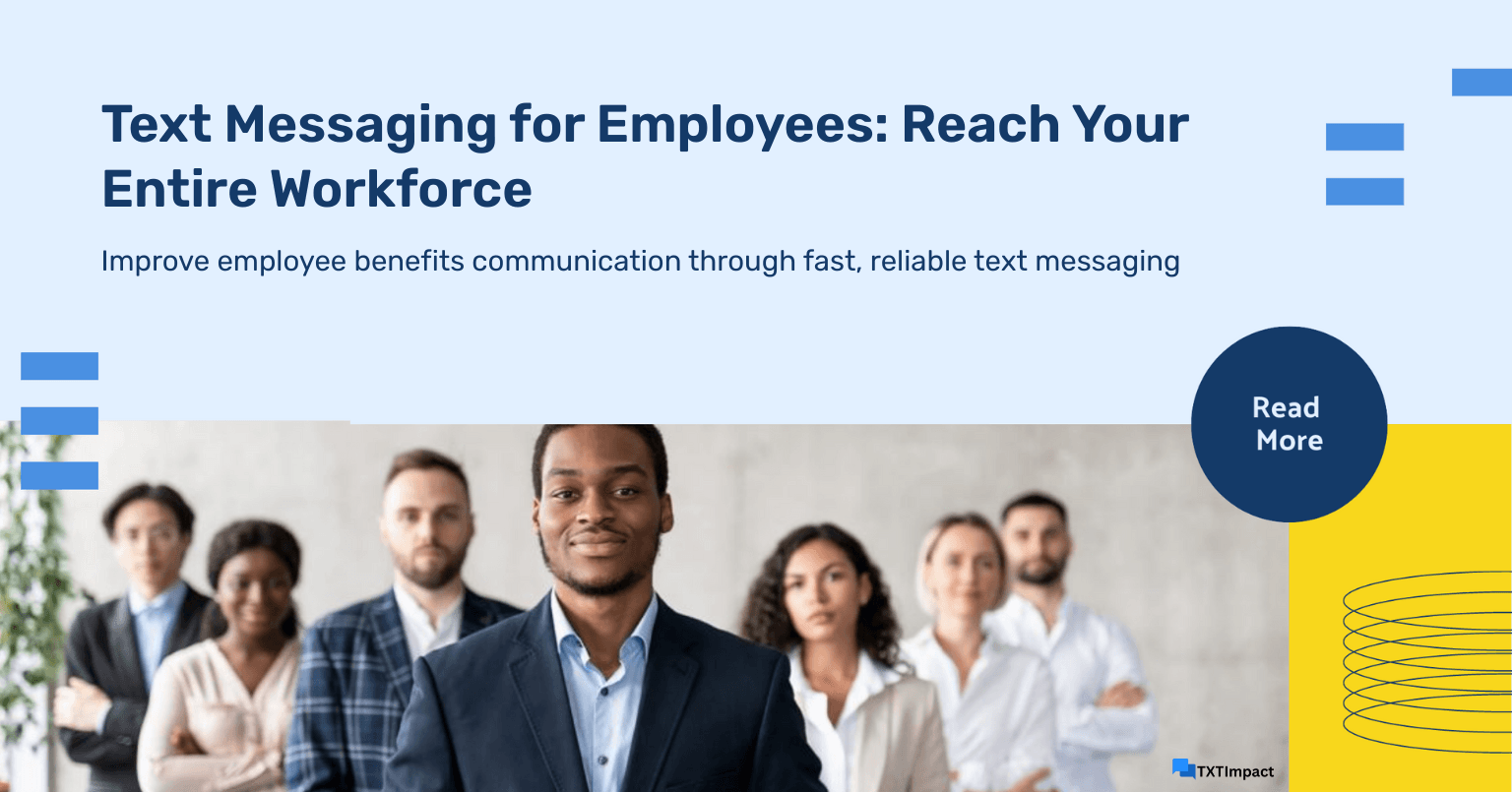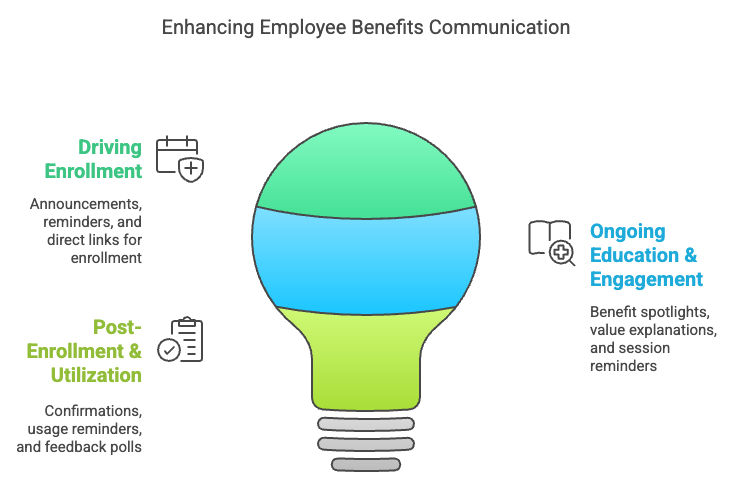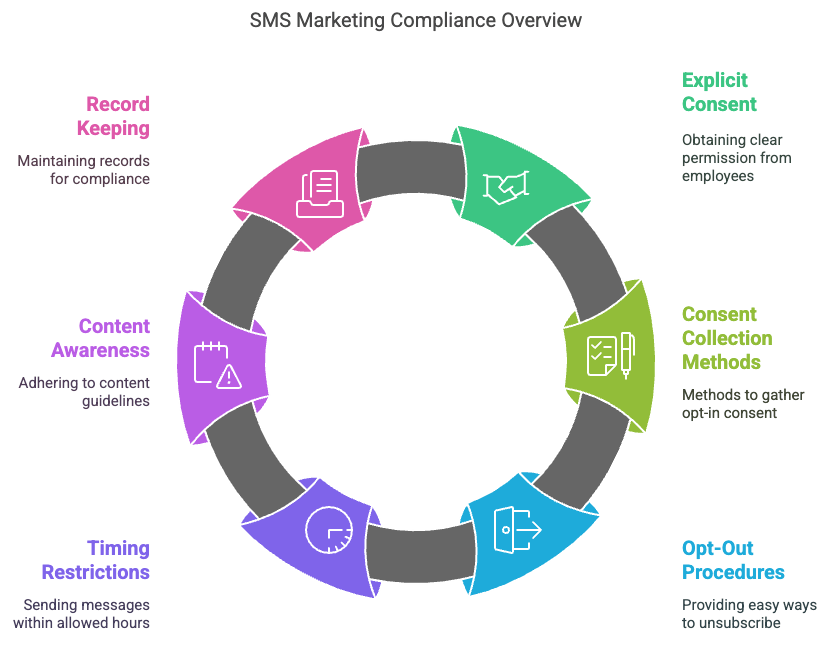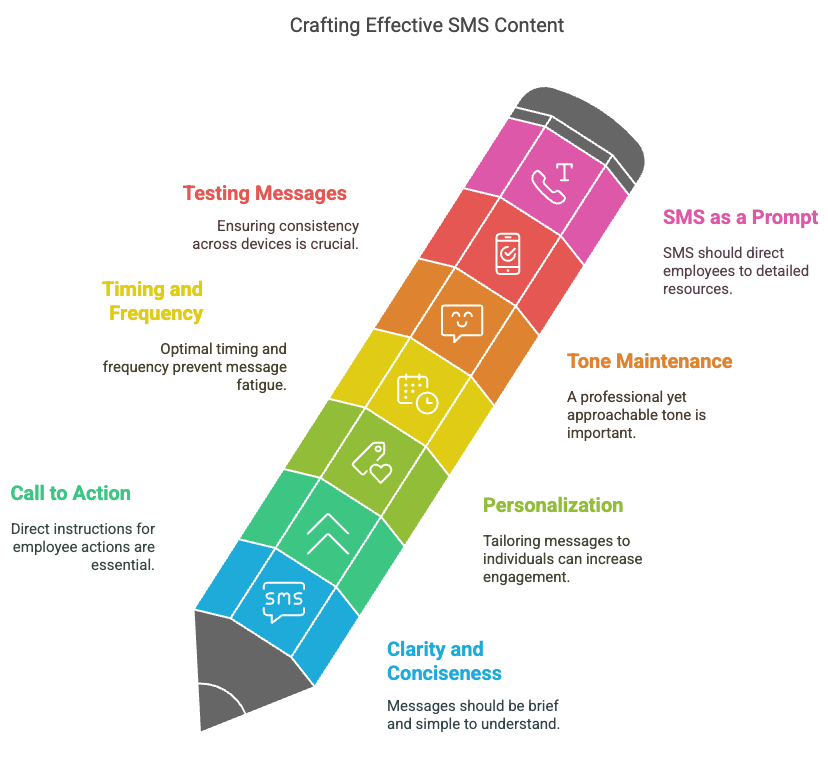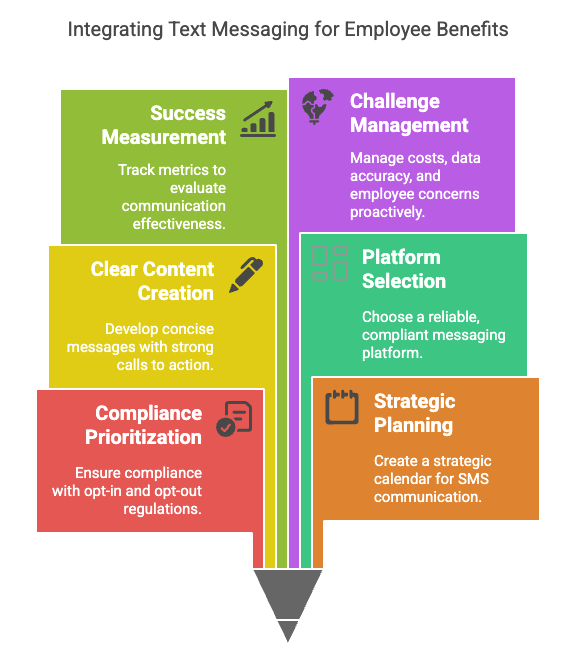Text messaging for employees stands out against channels like email due to its incredible reach and speed in the US. SMS open rates often exceed 95%, far higher than the typical 95% for email. This means benefits information sent via text is much more likely to be seen.
Speed is another major plus. Most texts are read within minutes, often under 90 seconds. This immediacy is perfect for time-sensitive updates like enrollment deadlines.
Smartphone ownership is widespread across the US workforce, with over 90% of adults owning one. This high penetration ensures texting for employees can reach nearly everyone, regardless of their role or demographics, improving mobile workforce engagement.
Crucially, sms marketing for employees connects with staff who lack regular computer access, like factory, field, or delivery personnel. For these non-desk workers, mobile phones are often their main communication tool.
SMS cuts through the digital clutter. Unlike crowded email inboxes or app notifications, a text message offers direct, personal contact, ensuring vital benefits news isn't missed.
The concise nature of text messaging for employees is also an advantage. Short, focused messages improve clarity and comprehension, especially for essential details like deadlines or links.
Finally, employee sms marketing feels more personal than mass emails. Thoughtful personalization (using names or relevant benefit info) strengthens connection and engagement.
Read: How HR Department Use SMS/Text Message Marketing?

